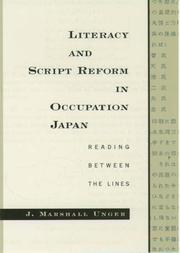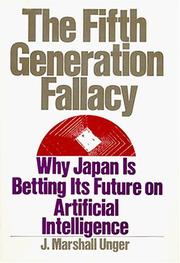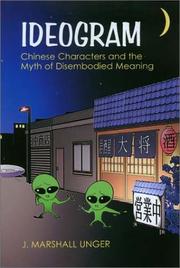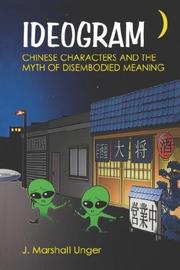| Listing 1 - 10 of 12 | << page >> |
Sort by
|

ISBN: 1280533692 0195356381 9780195356380 9786610533695 6610533695 0195101669 9780195101669 0197722008 9781280533693 Year: 1996 Publisher: New York : Oxford University Press,
Abstract | Keywords | Export | Availability | Bookmark
 Loading...
Loading...Choose an application
- Reference Manager
- EndNote
- RefWorks (Direct export to RefWorks)
Japanese writing intermingles three different sets of characters, making it difficult to adapt to new technology. This book looks at why the Japanese have not reformed their orthography and why the efforts at script reform that took place after World War II were defeated.
Japanese language --- Koguryo language --- Reform. --- Orthography and spelling. --- Writing.

ISBN: 019504939X Year: 1987 Publisher: New York : Oxford University Press,
Abstract | Keywords | Export | Availability | Bookmark
 Loading...
Loading...Choose an application
- Reference Manager
- EndNote
- RefWorks (Direct export to RefWorks)
Fifth generation computers --- Artificial intelligence. --- Word processing --- Japanese language --- Ordinateurs, Cinquième génération d' --- Intelligence artificielle --- Traitement de texte --- Japonais (Langue) --- Data processing --- Informatique

ISBN: 0824826566 Year: 2004 Publisher: Honolulu University of Hawaii press
Abstract | Keywords | Export | Availability | Bookmark
 Loading...
Loading...Choose an application
- Reference Manager
- EndNote
- RefWorks (Direct export to RefWorks)
Book
ISBN: 9781939161550 9781939161758 Year: 2015 Publisher: Ithaca Cornell university. East Asia program
Abstract | Keywords | Export | Availability | Bookmark
 Loading...
Loading...Choose an application
- Reference Manager
- EndNote
- RefWorks (Direct export to RefWorks)
Book
ISBN: 0824845684 Year: 2003 Publisher: Honolulu : University of Hawaii Press,
Abstract | Keywords | Export | Availability | Bookmark
 Loading...
Loading...Choose an application
- Reference Manager
- EndNote
- RefWorks (Direct export to RefWorks)
In this latest book, J. Marshall Unger exposes the historical, scientific, cultural, and practical flaws accompanying the widespread belief that Chinese characters embody pure, language-less meaning. Whether one is interested in Chinese characters from the standpoint of language, literature, semiotics, psychology, history, cultural studies, or computers, Ideogram contains new ideas and insights that are sure to challenge preconceptions and provoke thought.
Book
ISBN: 9780824845681 Year: 2003 Publisher: Honolulu
Abstract | Keywords | Export | Availability | Bookmark
 Loading...
Loading...Choose an application
- Reference Manager
- EndNote
- RefWorks (Direct export to RefWorks)
Book
ISBN: 9780824891015 Year: 2023 Publisher: Honolulu
Abstract | Keywords | Export | Availability | Bookmark
 Loading...
Loading...Choose an application
- Reference Manager
- EndNote
- RefWorks (Direct export to RefWorks)

ISBN: 9780824827601 Year: 2004 Publisher: Honolulu : University of Hawai'i Press,
Abstract | Keywords | Export | Availability | Bookmark
 Loading...
Loading...Choose an application
- Reference Manager
- EndNote
- RefWorks (Direct export to RefWorks)
Book
Year: 1992 Publisher: Osaka National Museum of Ethnology
Abstract | Keywords | Export | Availability | Bookmark
 Loading...
Loading...Choose an application
- Reference Manager
- EndNote
- RefWorks (Direct export to RefWorks)
Book
ISBN: 9027246777 Year: 2024 Publisher: Amsterdam/Philadelphia : John Benjamins Publishing Company,
Abstract | Keywords | Export | Availability | Bookmark
 Loading...
Loading...Choose an application
- Reference Manager
- EndNote
- RefWorks (Direct export to RefWorks)
The author establishes a theory of dialect divergence that avoids the problems caused by assumptions commonly encountered in Japanese historical dialectology. It explains why Japanese is best understood as a restricted tone language, and why mergers in the large tone classes of nouns and verbs are especially reliable markers of dialect divergence.
| Listing 1 - 10 of 12 | << page >> |
Sort by
|

 Search
Search Feedback
Feedback About UniCat
About UniCat  Help
Help News
News